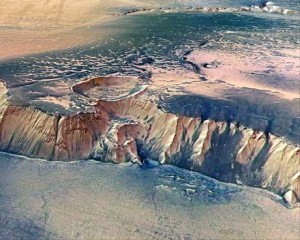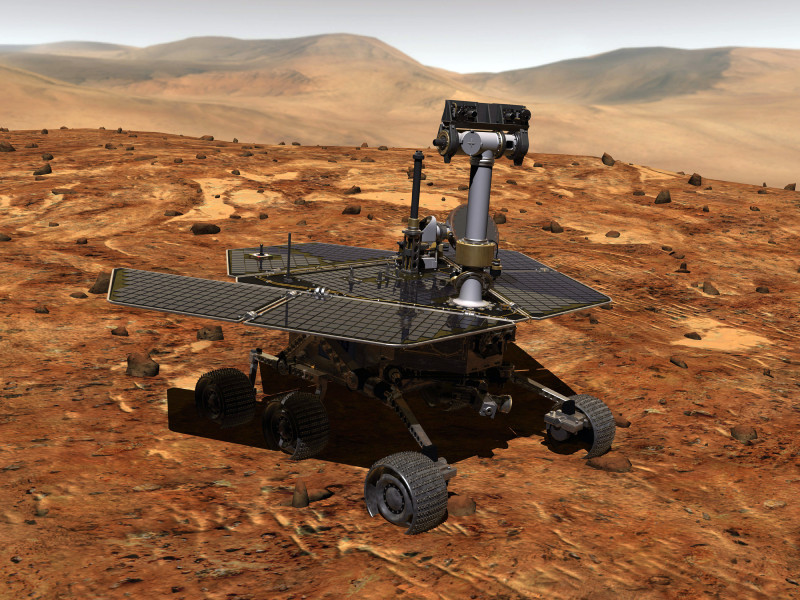
Water in its liquid form can exist on Mars but only during the summer and spring months and only for a couple of hours at a time, according to a new study.
Researchers at the University of Michigan have found that despite Mars’ sub-zero temperatures, small amounts of liquid water are able to form on the planet’s surface at the right temperature and with the presence of salt – furthering the idea that the planet can support life.
The findings were made after the research team at the University of Michigan created special chambers to imitate the freezing conditions found on the surface of Mars.
In these chambers, it was found that that water in its liquid form could be produced for short periods of time.
The study also found that this would only be possible if a type of salt, found on Mars last year, was present.
In 2008, the lead researcher of the latest study, Dr Nilton Renno, discovered water beads on the leg of the Phoenix Mars Lander, one of NASA’s Mars rovers, just after it had landed on the planet’s surface.
It was Renno’s theory that the water found on the spacecraft was created after salts had melted the ice underneath the Phoenix and found their way onto the spacecraft when the craft’s thrusters blasted away the surface’s topsoil.
Many of his contemporaries disagreed, because there had been no evidence that the salts he was describing had existed on Mars.
However, in 2013, NASA’s Mars rover Curiosity found the type of salts that Renno was describing.
Following this discovery, those at Michigan University carried out the experiment that looked to recreate the conditions that had occurred during the Phoenix landing.
Two scenarios were tested at different temperatures, one that saw just salt placed on a temperature controlled plate created to simulate the Mars surface, and one where salty soil was placed directly on ice.
In the first test no liquid formed.

In the second experiment, researchers found that placing salty soil directly on three millimetres of ice led to water droplets forming when the chamber reached -73C – the same conditions experienced during the Phoenix’s Mars landing.
‘For me, the most exciting thing is that I can now understand how the droplets formed on the Phoenix leg,’ said Dr Nilton Renno.
The study could also prove to scientists that Mars is able to sustain water across its surface during the summer and spring months, and could even be the first steps to finding out whether life could and does exist on the planet.
Dr Renno said: “even just a tiny droplet of water is enough for bacteria to grab hold of and survive.”
While a number of missions and studies have provided evidence for the existence of water on Mars in the past, water in its physical liquefied state has yet to be found directly on the planet’s surface.
Nevertheless, the new study adds to this wealth of evidence and gives scientists clear indications as to where water can be found on the planet and at what time is best to find it.





